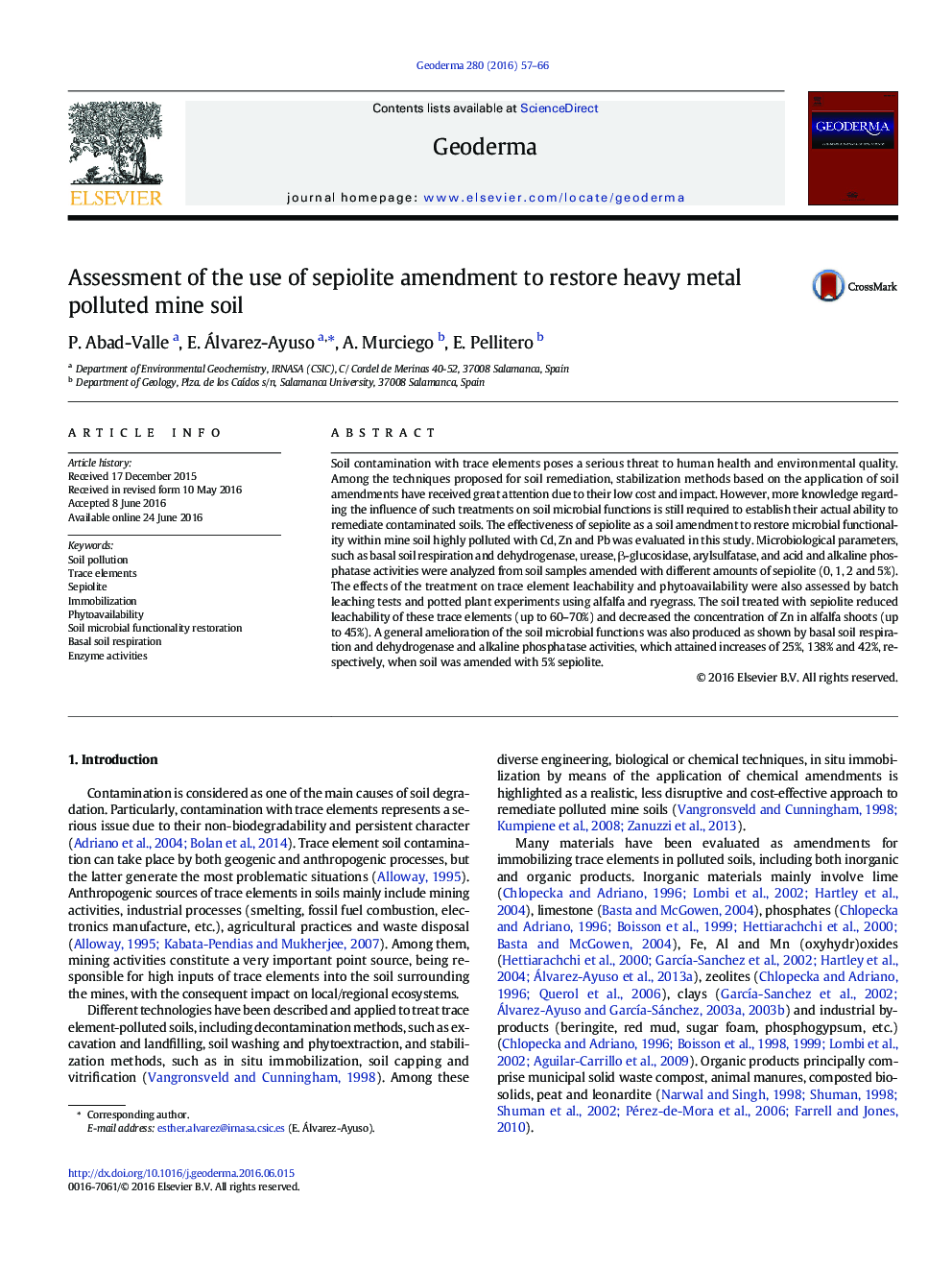| Article ID | Journal | Published Year | Pages | File Type |
|---|---|---|---|---|
| 4572836 | Geoderma | 2016 | 10 Pages |
•Evaluation of sepiolite as amendment to restore a trace element-polluted mine soil•Soil treatment with sepiolite improved soil habitat functionality.•Basal soil respiration and dehydrogenase activity increased up to 25 and 138%.•Soil treatment with sepiolite greatly decreased trace element leachability.
Soil contamination with trace elements poses a serious threat to human health and environmental quality. Among the techniques proposed for soil remediation, stabilization methods based on the application of soil amendments have received great attention due to their low cost and impact. However, more knowledge regarding the influence of such treatments on soil microbial functions is still required to establish their actual ability to remediate contaminated soils. The effectiveness of sepiolite as a soil amendment to restore microbial functionality within mine soil highly polluted with Cd, Zn and Pb was evaluated in this study. Microbiological parameters, such as basal soil respiration and dehydrogenase, urease, β-glucosidase, arylsulfatase, and acid and alkaline phosphatase activities were analyzed from soil samples amended with different amounts of sepiolite (0, 1, 2 and 5%). The effects of the treatment on trace element leachability and phytoavailability were also assessed by batch leaching tests and potted plant experiments using alfalfa and ryegrass. The soil treated with sepiolite reduced leachability of these trace elements (up to 60–70%) and decreased the concentration of Zn in alfalfa shoots (up to 45%). A general amelioration of the soil microbial functions was also produced as shown by basal soil respiration and dehydrogenase and alkaline phosphatase activities, which attained increases of 25%, 138% and 42%, respectively, when soil was amended with 5% sepiolite.
